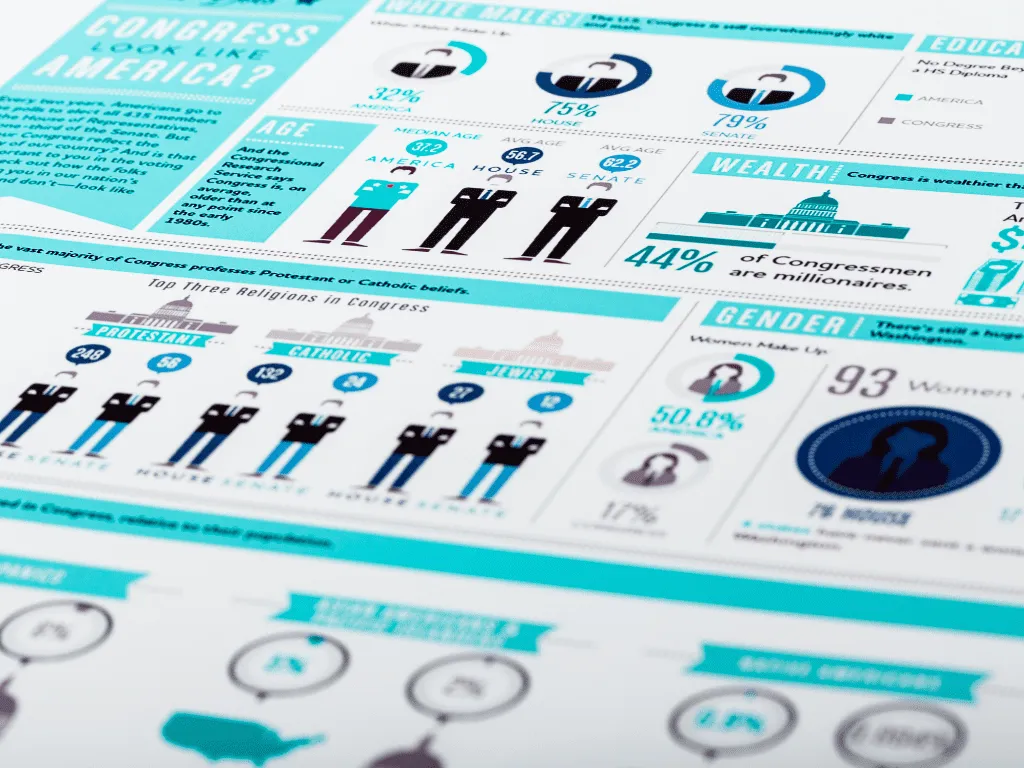HIPAA Infographic for Staff: A Visual Guide to Compliance

Understanding and adhering to HIPAA regulations is crucial in the healthcare industry. That's why a HIPAA infographic for staff should be simple enough to grasp. A user-friendly guideline should simplify complex information into an easily digestible format, providing a clear roadmap for maintaining compliance.
Whether you're a seasoned professional or new to the field, this article will be an essential tool in ensuring the protection of patient data and upholding the highest standards of privacy and security in healthcare.
The Power of Visual Learning: Introducing the HIPAA Infographic for Staff
Understanding the complexities of HIPAA can be a challenging task. With its intricate rules and regulations concerning healthcare privacy and security, it's not always easy to grasp for individuals outside the healthcare industry. That's where the HIPAA infographic for staff guidelines comes into play.
Visual learning is an instructional method that uses images, infographics, diagrams, and other visual aids to deliver information. It simplifies complex concepts and helps in easier and faster comprehension. This approach is particularly practical when dealing with complicated subjects like HIPAA.
The HIPAA infographic for staff is not just a tool for learning; it's also a quick reference guide. It presents crucial information in a digestible format that can be referred to anytime. By leveraging the power of visual learning, healthcare organizations can help ensure that everyone understands their rights and responsibilities under HIPAA.

HIPAA Training and Staff Responsibilities
HIPAA training is necessary for individuals and organizations that manage protected health information (PHI) in the United States. This includes:
- Covered entities. These are healthcare providers, health plans, and healthcare clearinghouses that transmit health information electronically.
- Business associates. These are organizations or individuals that offer services to covered entities and handle PHI.
- Healthcare professionals. Doctors, nurses, pharmacists, and administrative staff, among others.
- Other organizations
- Employers and employees in organizations that handle PHI, such as billing companies.
HIPAA training requirements for employers
Employers have a critical role in ensuring HIPAA compliance among their staff. Here are their responsibilities:
- Providing HIPAA training to all employees who handle PHI.
- Conducting regular audits and providing refresher courses.
- Fostering a culture of privacy and security within the organization.
HIPAA training requirements for employees
Employees also have significant responsibilities towards HIPAA compliance. They should:
- Understand their responsibilities in protecting patient information.
- Be familiar with the Privacy and Security Rules, their organization's policies, and best practices for handling PHI.
- Attend training sessions, ask questions, and report any potential violations.
Frequency of HIPAA Training
HIPAA does not specify how often training should occur, but annual training is highly recommended. Regular training keeps employees updated about regulation changes and reinforces best practices for handling PHI.
Who should receive HIPAA training?
All individuals who handle PHI, regardless of their role within the organization, must receive HIPAA training. This includes employees, volunteers, and contractors who have access to patient information.
HIPAA training and knowing staff responsibilities are crucial for maintaining compliance and protecting PHI.
How HIPAA Infographics Enhance Staff Training
Infographics can be a powerful tool for educating healthcare professionals and patients about the intricacies of HIPAA. Here are some ways a HIPAA infographic for staff can help:
Simplification of complex concepts
HIPAA guidelines can be complex and difficult to grasp for many. An infographic can break down these rules into simpler, understandable parts, making them easier to remember.
Effective communication of do's and don'ts
A well-designed HIPAA infographic can outline the necessary do's and don'ts for healthcare professionals and business associates who handle PHI.
Understanding rights under HIPAA
For patients, a HIPAA infographic can be an effective tool in understanding their rights under HIPAA, including access to their health records and how their information is protected.
Highlighting the importance of compliance
An infographic can visually communicate the importance of HIPAA compliance and the potential consequences of violations.
Risk management strategy
Infographics can also serve as a guide in determining risk management strategies, helping organizations ensure they remain compliant with HIPAA.

Wrapping Up: The Power of Infographics in Ensuring HIPAA Compliance
In conclusion, HIPAA infographics are vital in enhancing staff training and promoting compliance within healthcare organizations. These visual tools break down complex HIPAA guidelines into simplified, digestible information. Furthermore, they serve as an accessible resource for staff to understand HIPAA-related responsibilities. This emphasizes the importance of compliance and highlights the potential consequences of violations.
Ultimately, incorporating HIPAA infographics into staff training sessions is a proactive approach toward ensuring dependable compliance and fostering a culture of privacy and security within the healthcare sector.
Related Stories
What Is A HIPAA Medical Records Release Form?
HIPAA Compliant Messaging API: Secure Healthcare Communication
How Often Are HIPAA Audits Done in Healthcare
View our Privacy Policy for more info.
